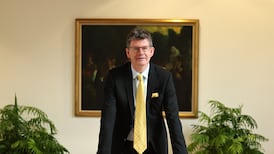People readily make judgments about other people's personality by the look of their face and will tend to find them attractive, if it is a personality type they like. And while there appears to be no universal view of attractiveness, there is a high level of consistency in the way people read the facial personality clues.
"When we look at somebody we get impressions of what they might be like," stated Prof David Perrett of the University of St Andrews. "What I am trying to understand is what drives those decisions."
Prof Perrett yesterday addressed the British Association's annual Festival of Science in London on the topic, "Awareness of Others". He and other researchers discussed the complex systems in the brain which are dedicated to our interpretation and recognition of faces.
It had been assumed for many years that there must be universal agreement on what attributes were considered attractive, Prof Perrett said, but the evidence has swung against this. There was much more consistency in the way people interpreted hidden clues to personality.
Test subjects were asked to view faces and decide what "dimensions of personality" they expressed, for example openness, agreeableness, deviousness, assertiveness or honesty.
The responses they gave indicated there was some consistency to the decisions and that people were able to guess personality on the basis of facial appearance. "It is better than chance," Prof Perrett said.
It also emerged that attractiveness was strongly linked to the personality type favoured by the test subject. "The personality that people want in a partner influenced who they saw as attractive," he said. This, he added ,led to odd partnering, for example a domineering woman matched with a passive man and vice versa and outgoing personalities matched to partners with reserved personalities.
Dr Steve Mithen of the University of Reading discussed how awareness of others might have evolved in humans. Being aware of another's mental state was one of the most significant abilities of the human mind, he said, and its importance meant it "must have a very deep biological basis". There was evidence from both the fossil and archaeological record to indicate when this happened.
He summarised the "five stages of evolution" which occurred over the last 10 million years. It started about that long ago in human and modern ape ancestors when they would have become adept at understanding body language, facial expression as a way to infer future behaviour. Stage four was the most important for understanding the distinctive nature of modern humans, he said. It was typified by the emerging use of decoration, including body paint and jewellery.
"At 30,000 years ago we get the explosion of how people are using material culture," he said, reflecting a greater self-awareness. Religion and acceptance of the existence of invisible beings also emerged at this time, which he categorises as stage five.









